
At 7.45mm, the vivo V30 5G is the slimmest phone powered by a 5,000mAh battery in the market to date. Boasting a 6.78-inch curved AMOLED display with Schott Alpha glass protection, the V30 is a modern, minimal beauty.

But don’t let that fool you. This phone is powered by a Snapdragon 7 Gen 3 chipset, so it is no pushover, performance-wise.
So, how does it stand out?
The phone’s Aura Light ring is hard to ignore, giving end users plenty of opportunities to have studio-esque shoots on-the-go.
Among its many uses are portrait shots, food photography, and even vlogs with the V30’s micro movie mode.
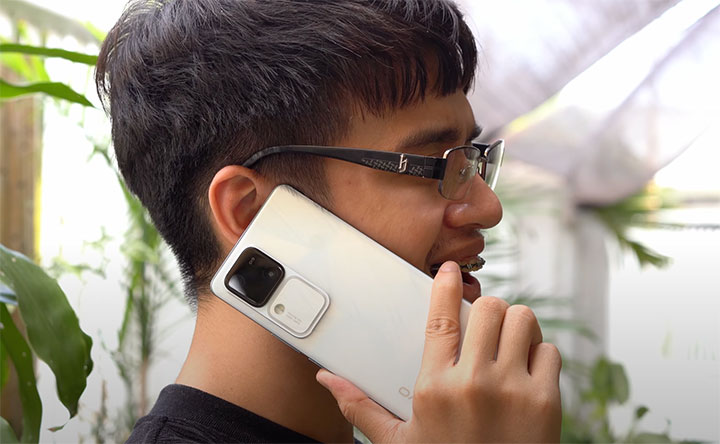
Now, for the real question: is the phone living up to the hype it’s riding on?
But before we start, for reference, our review model came in with 12GB of RAM and 256GB of storage.
Table of Contents
The vivo V30‘s design drew inspiration from Southeast Asian culture, with its colorways coming in Petals White and Green Sea.

This is certainly felt, as the patterns around the back panel reminded me of clouds and water. After all, Southeast Asia is known for white beaches and crystal-clear waters.
Moving on, it’s pleasantly thin at 7.45mm and easy to carry around. The V30 already has points in ergonomics for how comfortable it is to hold. After all, it’s marketed as the lightest phone with a 5,000mAh battery.
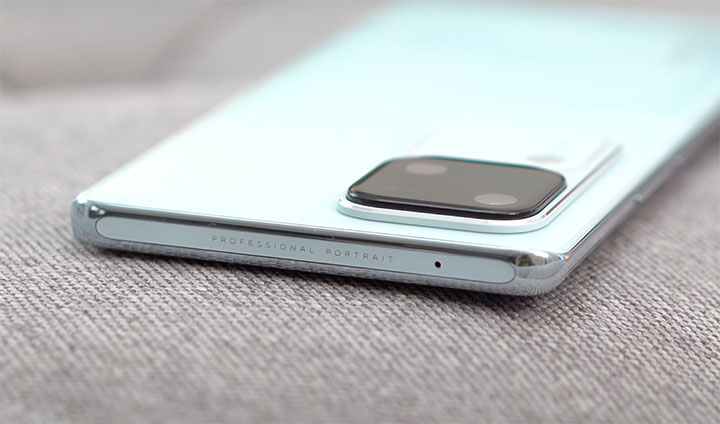
The V30 also has this sweet curved display that makes the phone feel nice around the bezels.
However, how the textures of the back panels may vary. The Green Sea colorway feels smooth and glass-like.

While the Petals White colorway, comes in a more matte kind of finish. This white one is definitely nicer in our opinion, but it does get a bit slippery depending on how sweaty the user’s palms are.
Personally, we aren’t fans of the glass-like panel because of how easy it attracts smudges.
So, if you’re someone easily bothered by this, keep this in mind. If not, well, everything should be quite peachy!
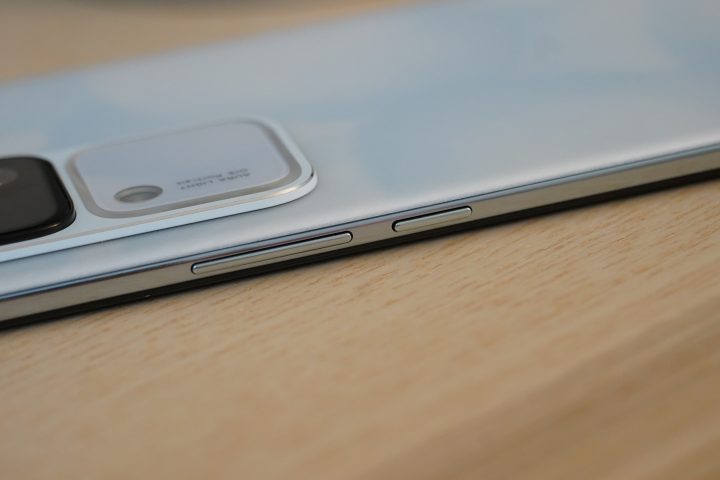
For buttons and ports, the volume rocker and power buttons are situated on the right side.

At the bottom, we have a USB Type-C port, a single downward-firing speaker grille, and a dual nano-SIM card slot.
Admittedly, it bugs me that a phone like this doesn’t have dual stereo speakers. I feel like most phones in the mid-range market would consider this the bare minimum.

Meanwhile, at the top, it features a noise-canceling microphone and branding that states “Professional Portrait”.
Sadly for some there is no 3.5mm audio jack present on this device.
Also, during our call tests, we actually found out that the V30’s call audio comes from a small slit within the thin top bezel of the display.

Next, we have the camera island at the back panel. The upper part has a 2.5D glass lens which is 0.35mm thick, housing two sensors for its dual-camera setup.

Below it is vivo’s ‘Aura Light’, seen from last year’s V29 which used to be in the vein of a more traditional ring light.
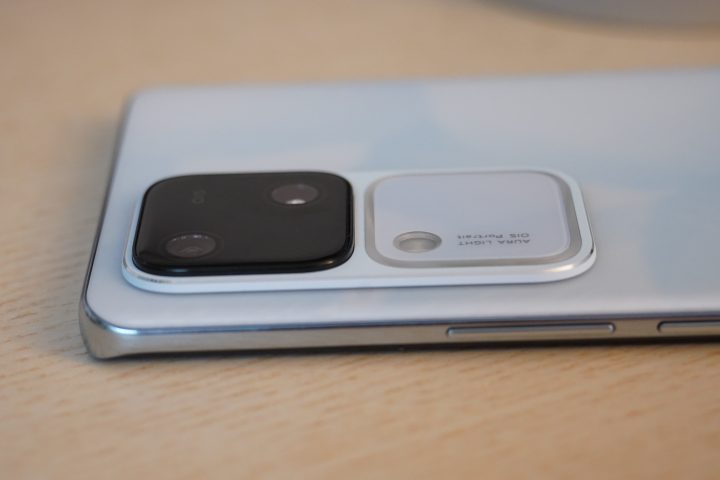
Both parts of the camera island are quite thin but still protrude from the body.
Last, but not least, the vivo V30 has an IP54 rating for dust and water resistance. This should definitely protect the phone from accidental splashes of water and tiny debris.
To add, this means the phone is not rated for water submersion at all. The build is good for the most part, so we wouldn’t be worried about accidentally bending the phone either.
Overall, I’d say vivo did a good job in fleshing out the phone. Sure, we might not be a fan of glass-like back panels, but it’s something subjective that people could work around.
The V30 has a 6.78-inch 2K curved AMOLED display (2800 x 1260, 20:9 aspect ratio) that supports HDR 10+, and is protected by Schott Alpha glass. This phone also has an 89.9 percent screen-to-body ratio and a pixel density of 453 pixels per inch (ppi).
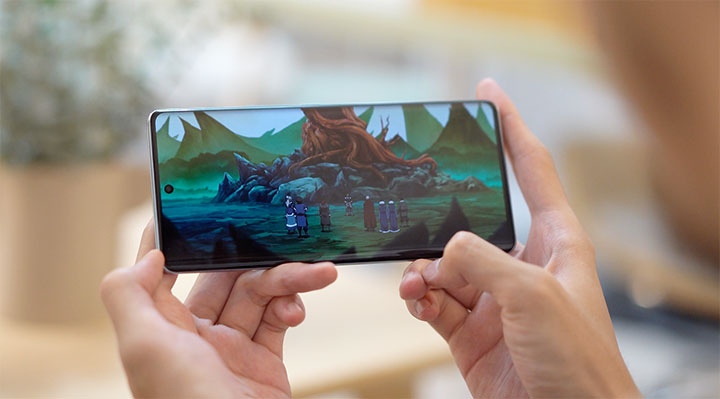
The display features a refresh rate of 120Hz and a peak brightness of 2800 nits.
And with these numbers, I can assure you that the V30 provides users with picture clarity, even outdoors in the sun.
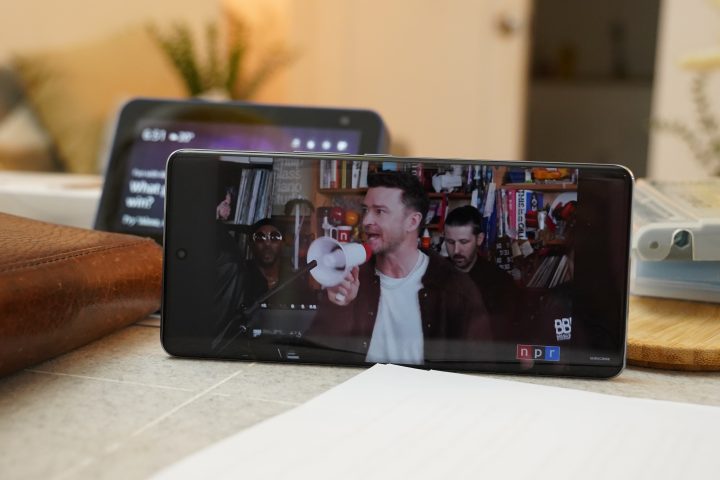
Moving on, I have to say, the mono speaker on the V30 is pretty good. For context, I usually play my Bluetooth speaker while working at about fifty to sixty percent volume.
So during work, I went to Netflix with low expectations just to see how loud it would be. Long story short, it didn’t disappoint. It overlapped with the music I was playing with decent audio quality.
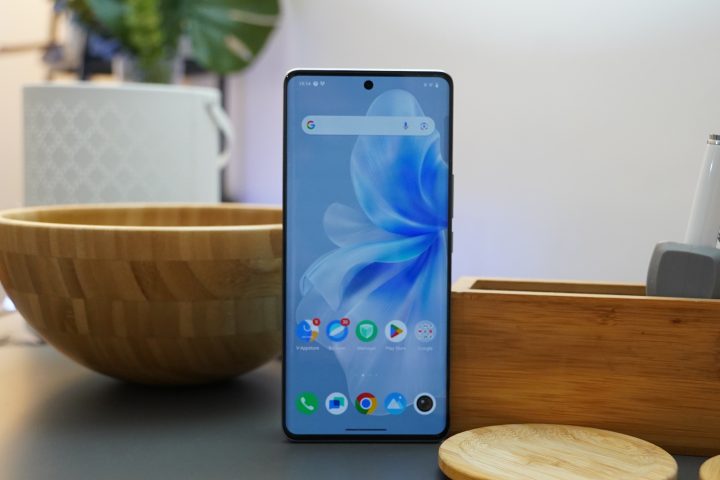
I’d say putting these two together has tied well into a pleasant multimedia consumption experience. A well-rounded display coupled with loud speakers made for an enjoyable Avatar: The Legend of Korra binge.

As for biometrics, the V30 has pretty standard options for modern means of security. These are inclusive of pattern, numeric, alphanumeric, fingerprint, and face unlock features.
While these surely won’t surprise most readers, I must say, the in-display fingerprint sensor does have a cool watery-ish animation.
The vivo V30 runs a dual-camera setup at the back.
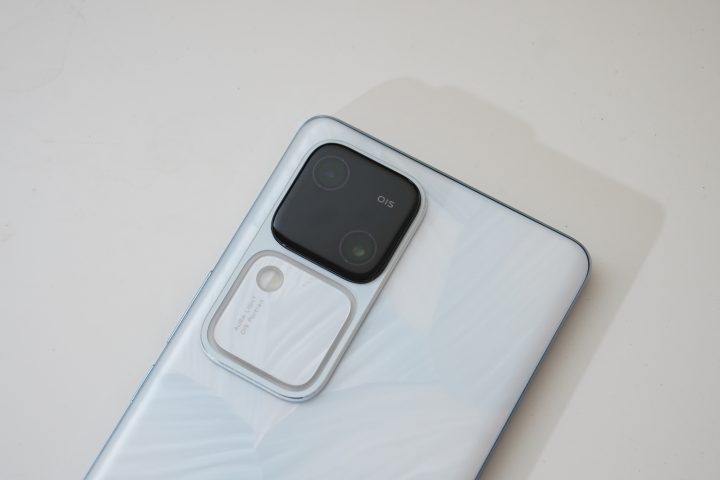
This setup consists of a 50MP main sensor (f/1.9) and a 50MP ultrawide lens (f/2.0).
I should also mention that the main sensor offers vivo’s Hybrid Image Stabilization, which combines both OIS and EIS technologies for better photo clarity with handheld shooting.
As for video capabilities, the rear camera setup can shoot up to 4K@30fps and 1080p@30fps with gyro-EIS enabled.
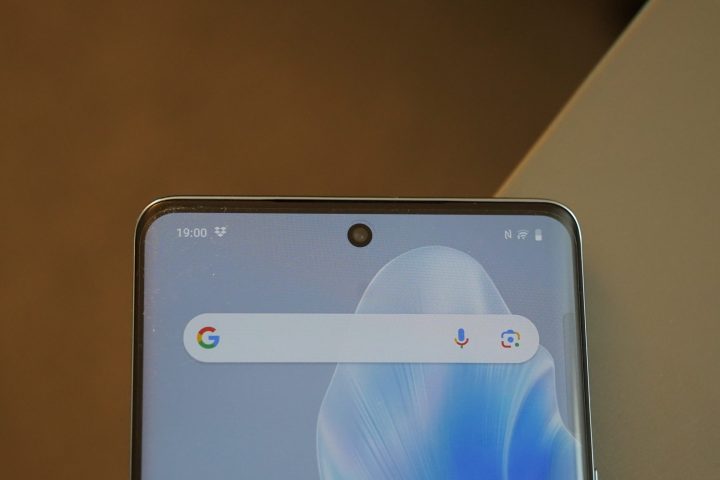
In front, the V30 sports a 50MP punch-hole selfie shooter (f/2.0). It can also shoot videos at the same resolutions as the rear cameras, but with the absence of gyro-EIS support.
But if you ever find yourself in less than favorable lighting conditions, the Aura Light ring comes in handy.
It gives some much appreciated brightness from a quick diffused fill light for subjects, adding detail to your portraits, group photos, and food adventures.

Why food adventures, you ask? The V30 has extra options apart from the usual panorama, slo-mo, time lapse, and Pro modes.
If you go to the other camera modes on the far right, you’ll see cool features for food photography, Supermoon, Astro, Snapshot, and Dual View.
On top of that, vivo provides end users with options to add grid lines for better framing. You can also put in customized watermarks with your signature if you’re not keen on using theirs.
As for video features, vloggers can rejoice as the V30 has a Micro Movie option for taking shorts on-the-go.
The cameras are quite nice, both able to give some depth and clarity to our shots. But, we’ll leave you guys to judge. Here’s some of our sample photos and videos below!
The camera setups and interface are pretty impressive overall. It feels smooth, clean, and user-centric. I’d highly recommend for users to tinker around with the V30 to see what they can do with it.
Making our way into software, the vivo V30 runs on Funtouch OS 14, which has greatly improved since its inception.
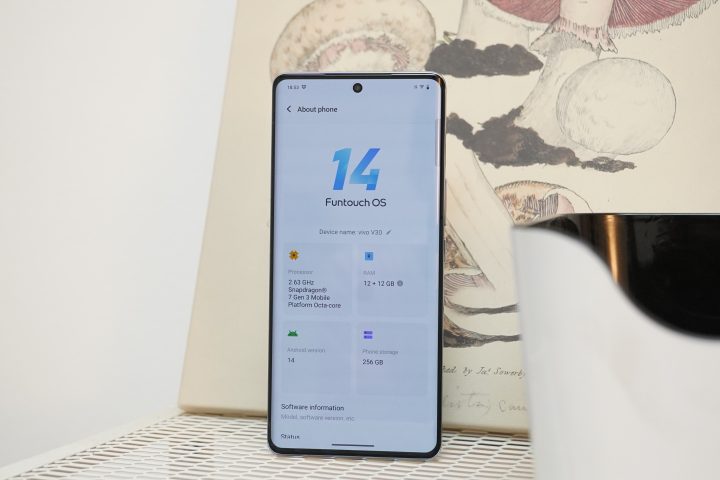
This software is geared towards a unique user experience through extensive personalization features made for vivo smartphones.
First off, you can customize your display in settings or tinker with animations in dynamic effects. This lets end users personalize screen animations, transitions, and even display resolutions.
Users also get a smart sidebar that refreshes to show users their most used apps and is also customizable. Additionally, there’s an audio widget with Spotify as the V30’s primary music player next to its dedicated Music app.
Out-of-the-box, the V30 is set to a FHD+ resolution (2400 x 1080), most likely for better battery efficiency, but we were able to bump it up to a clearer 2800 x 1260 or 2K resolution.
As for themes, the software provides a dedicated app with free and paid options to fit user preferences.
Speaking of apps, the V30’s bloatware consists of a dedicated app to their website, Facemoji, four pre-installed games, BIGO LIVE, and BingoPlus.
There’s also a folder for Games and App recommendations.
Apart from this, they’ve also pre-installed apps they think users from the Philippines will use like Facebook, Spotify, Netflix, TikTok, Shopee, Lazada, LinkedIn, and Agoda.
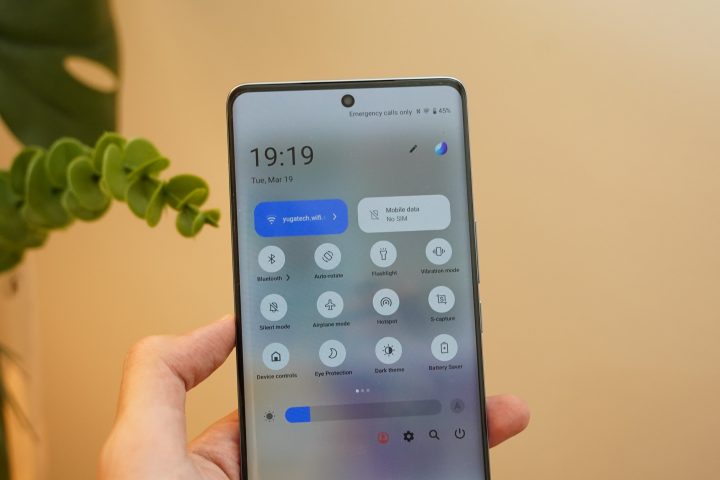
For its user interface (UI), I have to say, I appreciate how neatly everything is positioned.
I should mention that the drop-down is inclusive of nifty features like a calculator, dark theme switch, and an Ultra Game mode. But of course, these are customizable.

All things considered, the consensus for the V30 under this category passes with flying colors. I mean sure, there’s a bit of bloatware, but users can uninstall them anyway.
The vivo V30 is powered by last year’s Qualcomm Snapdragon 7 Gen 3. A 4nm chipset that features an octa-core processor capable of up to 2.63 GHz clock speeds, paired with an Adreno 720 GPU.

Our review unit comes with 12GB of RAM, with RAM extension features that can be toggled on or off. When turned on it provides users with an additional 12GB of virtual memory.
For internal storage, vivo V30 units in the Philippines get either 256GB or 512GB of UFS 2.2 internal storage. Oh and yes, the RAM configuration for the 512GB model would also be 12GB.

For gaming, it handled games like Honkai: Star Rail, Asphalt 9, and my personal go-to, Teamfight Tactics with no issues.
The phone didn’t slow down with graphics-intensive games, but as a warning, the V30 can noticeably heat up with prolonged use.
Other than that, we would say the phone’s pretty solid in the performance department. With its numbers, I’m sure there’s a very small margin for apps that it can’t run.
And speaking of numbers, for those who are interested, we also have the benchmark scores for you below.
| Benchmark Tools | vivo V30 score |
|---|---|
| Antutu | 818,694 |
| Antutu Storage Test | 48,376 |
| S. Read | 11,364 |
| Speed | 990.3MB/s |
| S.Write | 9914 |
| Speed | 864.0MB/s |
| R.Access | 27,098 |
| R.Speed | 407.0MB/s |
| W.Speed | 321.0MB/s |
| 3D Mark: Wild Life | 5442 |
| Geekbench 6 Single-core | 1142 |
| Geekbench 6 Multi-core | 3210 |
| Geekbench 6 GPU Vulkan | 4169 |
| Geekbench 6 GPU OpenCL | 3555 |
| PC Mark Work 3.0 Performance | 10,733 |
If there’s anything to conclude this with, it’s that the V30 will provide end users with exceptional performance.
Powering the vivo V30 is a 5,000mAh lithium-ion (Li-ion) battery and features 80W FlashCharge technology.

Charging the battery from 0-100% takes about an hour with the included adapter. With a standard 10W charger, it should take about two hours.
In general use the phone should last you the entire day with different tasks and no major issues.
In fact, in PC Mark’s Work 3.0 Battery Test, our review unit lasted 24 hours and 54 minutes.
And in our standard video loop test, the phone was able to last an insane length of 30 hours and 57 minutes. The test was conducted in airplane mode, at 50% brightness, and with muted volume for mixed use variables.
The V30 has a dual nano-SIM card slot, which may confuse some end users. To elaborate, it appears like it’s a single tray, but users must place each nano-SIM on opposite sides.

The vivo V30 also supports 5G connectivity, along with Wi-Fi 6, Bluetooth 5.4, and NFC support.
When it comes to actual call quality and messaging, I would say it’s pretty alright. We didn’t run into any signal issues, and we were able to make calls, send messages, and use mobile data as usual.
As we wrap this up, I’m sure we have to address the elephant in the room. How much is the vivo V30?
At the time of writing this review, the V30 should be available at vivo’s official stores, Lazada, Shopee, and TikTok for PHP 24,999USD 426INR 36,114EUR 406CNY 3,102 with 12GB of RAM and 256GB of internal storage.
It’s also available with 12GB of RAM and 512GB of internal storage for PHP 27,999USD 477INR 40,447EUR 454CNY 3,475 with available colors in Petals White and Green Sea.
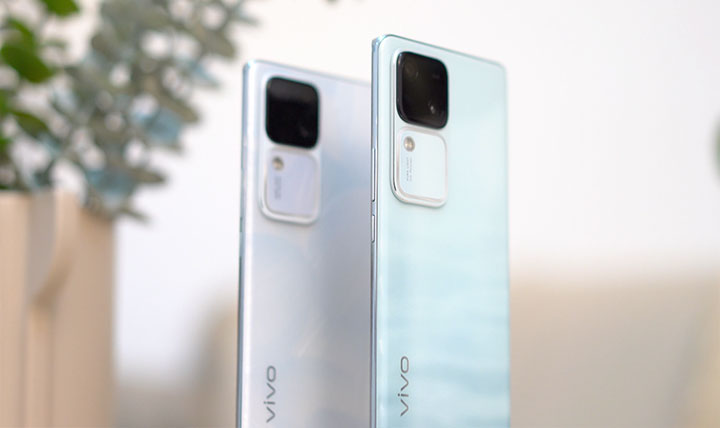
Considering its cost, performance, and everything else under the sun, the V30 is an excellent pickup for 2024.
It’s got a fairly minimal but unique design language, with software that caters to user experience, and has a solid camera setup that stands out.
And when it comes to performance, this phone is no slouch either. Users get a Snapdragon 7 Gen 3 to back this up paired with a long-lasting 5,000mAh battery.
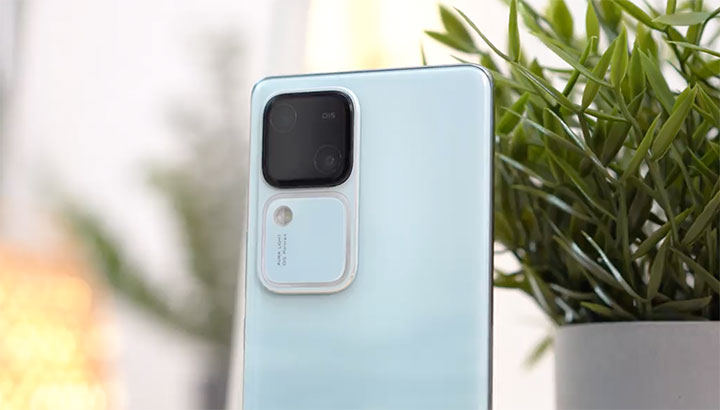
Additionally, you can dress up your interface as you see fit through accommodating software inclusions.
For cons, the phone noticeably heats up in prolonged use, different colorways have different feeling back panels that may or may not suit the user’s preference, and there’s still a fair bit of bloatware to clean up.
If it were up to us, we’d definitely pick the vivo V30 up for its camera setup, overall performance, and extremely long-lasting battery life. The pros definitely outweigh the cons.
And looking at it now, it doesn’t seem too overwhelming for what end users could get out of it. But yeah, let us know what you think in the comment section below!
What we liked:
* Performance and photography abilities
* User-friendly interface
* Insane battery life
What we didn’t like:
* Glass back panel in Green Sea (smudging), slippery back panel in Petals White
* Heating up with prolonged use
* Cleaning up apps we’ll never use at all
vivo V30 5G specs:
6.78-inch curved AMOLED display @ 2800 x 1260 pixels
89.9% screen-to-body ratio, 20:9 aspect ratio
Schott Alpha glass protection
120Hz refresh rate, 2800 nits peak brightness @ 453ppi density
HDR10+ support
Qualcomm Snapdragon 7 Gen 3
1 X Cortex-A715 @ 2.63GHz
3 X Cortex-A715 @ 2.4GHz
4 X Cortex-A510 @ 1.8GHz
Adreno 720 GPU
12GB RAM
256GB, 512GB UFS 2.2
Dual-rear camera setup
50MP sensor, f/1.9, hybrid image stabilization (OIS + EIS)
50MP ultrawide lens, f/2.0
Aura Light Portrait flash (Ring-LED flash)
50MP selfie shooter, f/2.0, 21mm (wide)
4K@30fps, 1080p@30fps, gyro-EIS
Mono loudspeaker
In-display speaker (for calls)
Noise-cancelling microphone
5G LTE
Dual nano-SIM
Wi-Fi 6
Bluetooth 5.4
NFC Supported
GPS, GALILEO, GLONASS, QZSS, BDS
Funtouch OS 14 (Android 14)
5,000mAh Li-ion battery, 80W FlashCharge
USB Type-C 2.0
Fingerprint sensor (in-display)
Proximity sensor
Accelerometer, compass, gyroscope
IP54 dust and water resistance rating
164.4mm x 75.1mm x 7.45mm (dimensions)
186 grams (weight)
Petals White, Green Sea (colors)

YugaTech.com is the largest and longest-running technology site in the Philippines. Originally established in October 2002, the site was transformed into a full-fledged technology platform in 2005.
How to transfer, withdraw money from PayPal to GCash
Prices of Starlink satellite in the Philippines
Install Google GBox to Huawei smartphones
Pag-IBIG MP2 online application
How to check PhilHealth contributions online
How to find your SIM card serial number
Globe, PLDT, Converge, Sky: Unli fiber internet plans compared
10 biggest games in the Google Play Store
LTO periodic medical exam for 10-year licenses
Netflix codes to unlock hidden TV shows, movies
Apple, Asus, Cherry Mobile, Huawei, LG, Nokia, Oppo, Samsung, Sony, Vivo, Xiaomi, Lenovo, Infinix Mobile, Pocophone, Honor, iPhone, OnePlus, Tecno, Realme, HTC, Gionee, Kata, IQ00, Redmi, Razer, CloudFone, Motorola, Panasonic, TCL, Wiko
Best Android smartphones between PHP 20,000 - 25,000
Smartphones under PHP 10,000 in the Philippines
Smartphones under PHP 12K Philippines
Best smartphones for kids under PHP 7,000
Smartphones under PHP 15,000 in the Philippines
Best Android smartphones between PHP 15,000 - 20,000
Smartphones under PHP 20,000 in the Philippines
Most affordable 5G phones in the Philippines under PHP 20K
5G smartphones in the Philippines under PHP 16K
Smartphone pricelist Philippines 2024
Smartphone pricelist Philippines 2023
Smartphone pricelist Philippines 2022
Smartphone pricelist Philippines 2021
Smartphone pricelist Philippines 2020